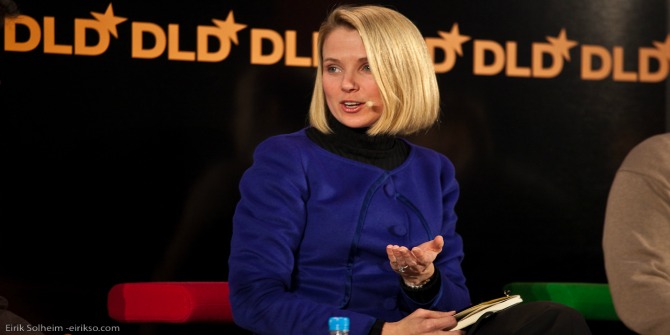
What is true uncertainty?
This has been a pleasant summer for London. The sun’s up, the sky is clear, and people are out. But London’s economy doesn’t feel as pleasant as the weather, as it still grapples with the “Brexit shock”. The Friday morning of 24th June, after the EU referendum, was supposed to be business as usual. However, the UK voted for Brexit, and the economy went berserk. The markets plummeted, the pound crashed, and businesses were left with hundreds of unresolved questions. Is Brexit going to happen for real? When will it happen? What will a post-Brexit world look like? Where will the pound settle? How will the EU respond? Along with the several unresolved questions, there was also the uncertainty being created by uncertainty itself, as businesses wondered how would other businesses respond to this uncertainty.
The uncertainty of Brexit was unusual. It is unlike a “risk”, such as the risk of an earthquake in Japan, which can be anticipated and thus appropriately planned for. Neither is it like the usual everyday uncertainty, about the number of tourist arrivals, or sales figures of the newest fashion trends, whose range and likelihood can be estimated, and decisions can be made accordingly. Instead, Brexit resembled true uncertainty where it was difficult to even characterise the nature of uncertainty itself.
McKinsey and Co (Strategy under uncertainty) suggests that true uncertainty creates an opportunity for businesses to shape their markets. This indeed is a nice idea that would make some businesses feel more in control in an otherwise clueless situation. However, it is unclear how any business would aim at such an ambitious goal, when even the contours of the problem are unknown?
So, let’s ask a more basic question, what strategy will help businesses do a better job than others in an environment of true uncertainty?
What is strategy?
When we think of strategy, we often think of a blueprint that businesses have in order to execute decisions. However, the role of strategy in business is more fundamental than merely building good blueprints. In the end, a good strategy should give managers the ability to execute effective decisions under uncertainty.
Under usual scenarios it is reasonable to assume that a good strategy involves two steps:
- Firstly, a blueprint is designed to help managers decide under uncertainty
- Secondly, those decisions are executed effectively in the desired manner
Under true uncertainty, this two-step assumption is no longer true. When the contours of the problem are unclear, there is just too much ambiguity for any blueprint or plan to be of any effective use. So, what does business strategy look like when a blueprint does not exist? Or in other words, how can managers execute effective decisions without a blueprint?
A blueprint-based business strategy is deliberative, and reasonably so. However, strategy under true uncertainty should be agile and responsive to the most immediate information, as businesses that would be best able to continually adapt to the changing environment will have the best chances at doing well. The problem is that organisations that thrive under usual uncertainty, by embedding processes that enable proper deliberation, may be bureaucratic and inflexible by design, and thus less suitable under conditions of true uncertainty. Thus, while under usual uncertainty focus needs to be on developing a good blueprint for execution, under true uncertainty when no blueprint shall be effective, the focus needs to be on organisational design and processes that enable adaptability, agility and effective execution.
The examples of Silicon Valley and Route 128
The rise of San Francisco’s Silicon Valley and its contrast to Boston’s Route 128 present a good example of the importance of effective organisational design in an ambiguous world. Both Silicon Valley and Route 128 were technology hubs that sprang out of university-based innovation and were supported by post World War 2 military spending.
During the highly uncertain 1980s, when technology began to rapidly change, and the contours of future technology and IT businesses were unclear, Silicon Valley thrived, while Route 128 declined. Why? AnnaLee Saxenian provided a fascinating insight into this divergence in her book Regional Advantage (1996). While both regions seemed similar on a wide range of parameters, when she looked at the network structure within and between businesses in Silicon Valley and Route 128, she found out that they were very distinct. Silicon Valley had “loosely linked team structures” that encouraged communication across divisions and organisations. In contrast, Route 128 was dominated by “autarkic corporations” with rigid boundaries and hierarchies.
While firms in Silicon Valley allowed for horizontal communication, the communication within firms in Route 128 region was vertical. The structured, hierarchical and barricaded organisational structure enabled a more deliberative and planned approach to strategy, which was suitable for Route 128 businesses in the era of technological and market certainty until the 1970s. However, when the market began to rapidly change in the 1980s, the same deliberative structure became a bottleneck, while the agility and adaptability of Silicon valley firms became a strategic advantage in an era where communication mattered more than a blueprint.
The uncertainty since the 1980s in the IT industry was technological by nature and affected certain industries across nations. In contrast the uncertainty of Brexit is political and especially affects the United Kingdom. Both are examples of true uncertainty that leaves businesses clueless, but opens avenues to new opportunities. While every business should be driven by a vision, and rationalised objectives if possible, when the contours of the future are unclear, the strategic advantage comes from organisational form, instead of organisational plans. Firms that can better communicate and respond to the ever-changing environment of true uncertainty are better able to thrive in the uncharted waters of rare and unique scenarios like Brexit.
♣♣♣
Notes:
- The post gives the views of its author, not the position of LSE Business Review or the London School of Economics.
- Featured image credit: London Eye, by SignorDeFazio, CC-BY-SA-2.0
- Before commenting, please read our Comment Policy
 Prateek Raj (p.raj.12@ucl.ac.uk) is interested in coordination dilemmas of past and present with research in economic history, political economy, and operations. He was born and brought up in Bihar and Jharkhand, states in eastern part of India. He is a PhD student at UCL School of Management. He is also a Research Associate at Stigler Center at University of Chicago Booth School of Business and a Visiting Fellow at Kellogg School of Management at Northwestern University. Prateek graduated from IIT Delhi in 2010, has provided consulting to clients in the metals sector and has taught Operations Research at LSE.
Prateek Raj (p.raj.12@ucl.ac.uk) is interested in coordination dilemmas of past and present with research in economic history, political economy, and operations. He was born and brought up in Bihar and Jharkhand, states in eastern part of India. He is a PhD student at UCL School of Management. He is also a Research Associate at Stigler Center at University of Chicago Booth School of Business and a Visiting Fellow at Kellogg School of Management at Northwestern University. Prateek graduated from IIT Delhi in 2010, has provided consulting to clients in the metals sector and has taught Operations Research at LSE.






But what if ‘horizontal communication’ represents bickering and jostling between silos? Are you suggesting this is adaptive under (extreme) uncertainty? What about “normal” times? is an organization that is mostly reactions going to be any good at objectives?